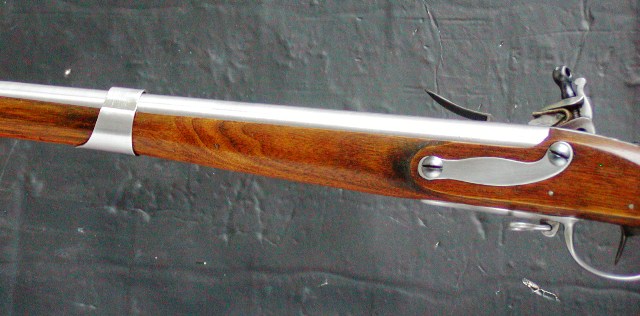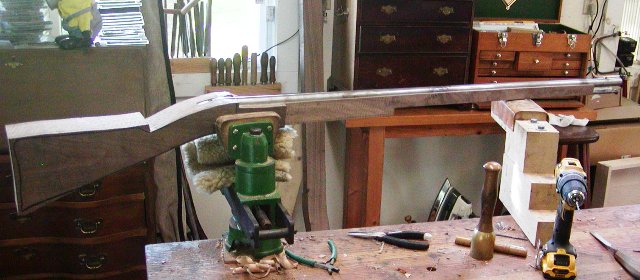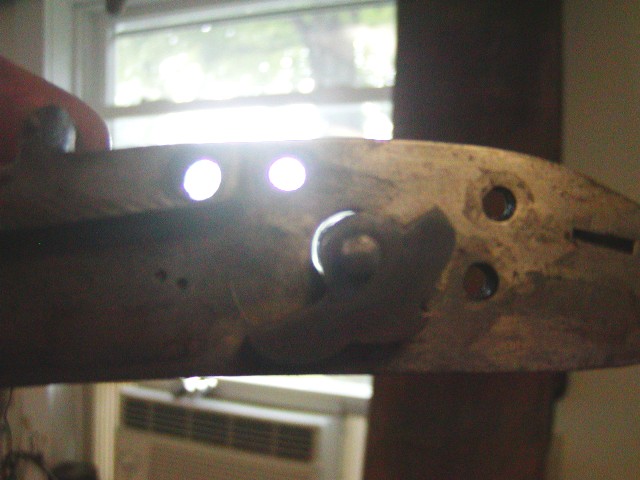- Joined
- Nov 26, 2005
- Messages
- 5,240
- Reaction score
- 11,006
Hi Folks,
My Braintree Hill gun shop is humming with work. My apprentice, Maria, and I are busy arming reenactors and building museum pieces. If you look in from the road, you can hear sawing, hammering, rasping, welding, forging, and filing much like it probably was in the 18th century. This is a summer of muskets and carbines. The first project out the door was a Ferguson rifle followed by a complete make over of a Miroku Charleville musket. The Charleville was badly rusted inside and out, and the stock covered with a dull, ugly, black-brown waxy finish that was dented, scratched and abused. The lock and hardware were corroded messes. It was known as the "dirty French musket" by the reenactor unit to which it belonged. That name no longer applies.








Next up are two pattern 1769 short land British muskets. One will be marked "Tower" and the other "Dublin Castle". Because getting complete parts sets from the Rifle Shoppe prevents timely work, we opted to merge some components from Miroku and a Pedersoli reproductions. The following musket uses the barrel from a Pedersoli reproduction and some Miroku lock parts fitted to a lock plate, frizzen, and cock from TRS. The Japanese made lock parts are of exceptional cast steel, and the Pedersoli barrel is very good steel but is a little small in all dimensions. However, we may wait a long time for the proper barrels and the Pedersoli will work with some care and adjustments. The next post will begin the King's musket work.
dave
My Braintree Hill gun shop is humming with work. My apprentice, Maria, and I are busy arming reenactors and building museum pieces. If you look in from the road, you can hear sawing, hammering, rasping, welding, forging, and filing much like it probably was in the 18th century. This is a summer of muskets and carbines. The first project out the door was a Ferguson rifle followed by a complete make over of a Miroku Charleville musket. The Charleville was badly rusted inside and out, and the stock covered with a dull, ugly, black-brown waxy finish that was dented, scratched and abused. The lock and hardware were corroded messes. It was known as the "dirty French musket" by the reenactor unit to which it belonged. That name no longer applies.








Next up are two pattern 1769 short land British muskets. One will be marked "Tower" and the other "Dublin Castle". Because getting complete parts sets from the Rifle Shoppe prevents timely work, we opted to merge some components from Miroku and a Pedersoli reproductions. The following musket uses the barrel from a Pedersoli reproduction and some Miroku lock parts fitted to a lock plate, frizzen, and cock from TRS. The Japanese made lock parts are of exceptional cast steel, and the Pedersoli barrel is very good steel but is a little small in all dimensions. However, we may wait a long time for the proper barrels and the Pedersoli will work with some care and adjustments. The next post will begin the King's musket work.
dave







































